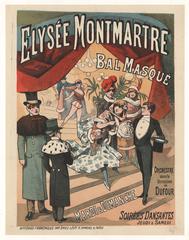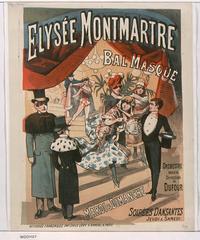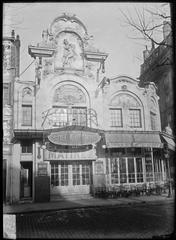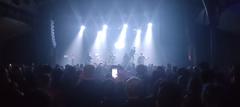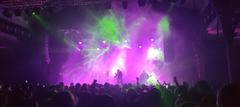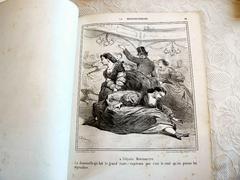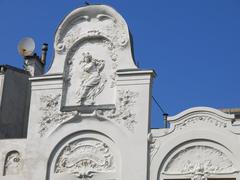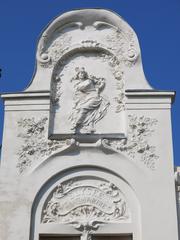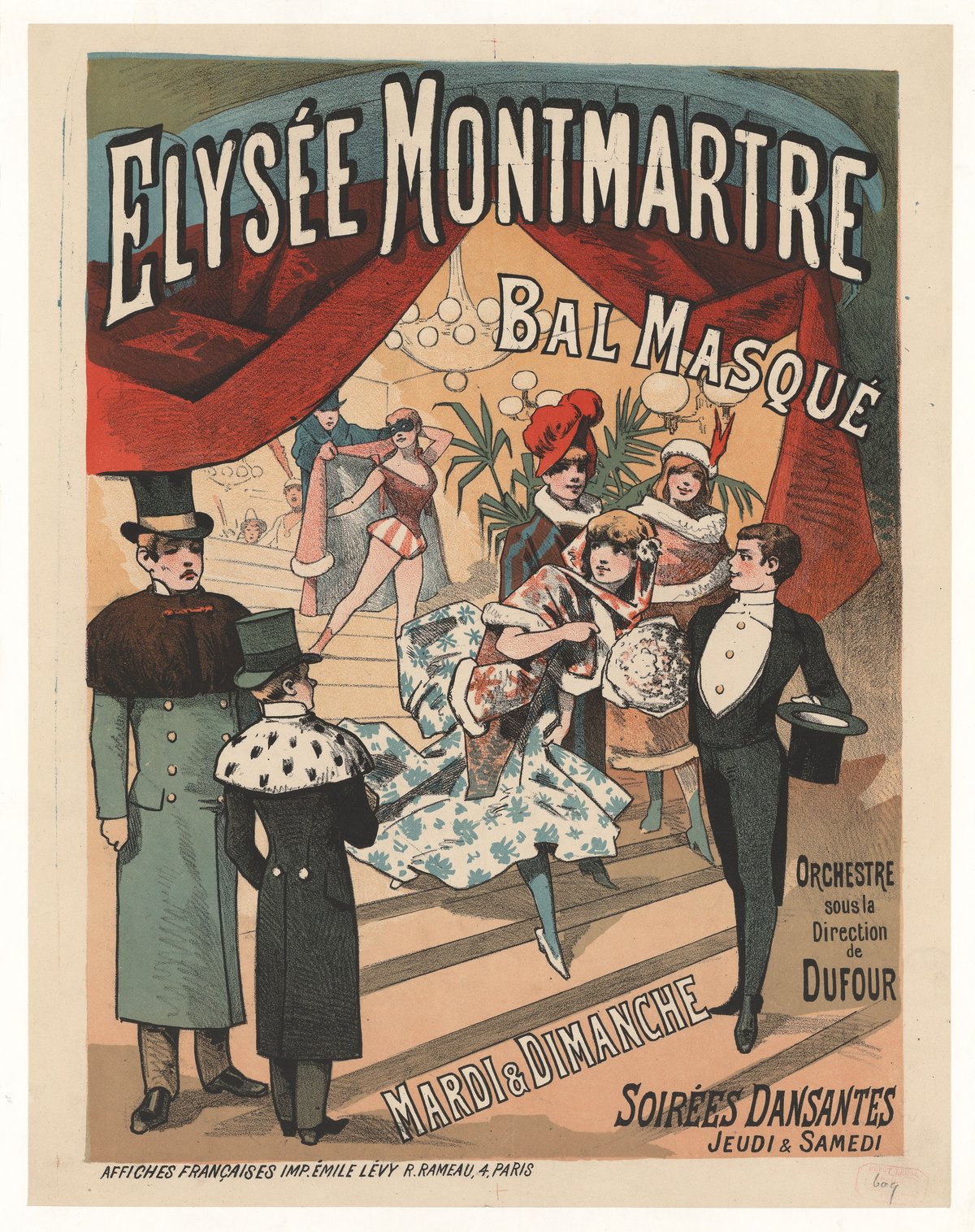
Élysée Montmartre Paris: Visiting Hours, Tickets, and Complete Guide
Date: 14/06/2025
Introduction: The Heartbeat of Montmartre’s Cultural Legacy
Élysée Montmartre, set at 72 Boulevard de Rochechouart in Paris’s 18th arrondissement, is a living testament to the city’s dynamic history and artistic vibrancy. Since 1807, this iconic venue has evolved from a countryside ballroom into a world-renowned concert hall, surviving wars, fires, and social upheavals. Today, it stands as a bridge between Montmartre’s bohemian past and Paris’s contemporary creative scene, making it a must-visit for music lovers, history buffs, and travelers alike (Élysée Montmartre official history; Wikipedia; Montmartre Apartments).
Table of Contents
- Origins and Early Years (1807–Late 19th Century)
- Times of Upheaval and Transformation
- Cultural Flourishing and Bohemian Spirit
- Modern Entertainment and Musical Innovation
- Fire, Restoration, and 21st-Century Revival
- Practical Visitor Information
- FAQ
- Visitor Tips
- Conclusion
- Sources
Origins and Early Years (1807–Late 19th Century)
Established during the Napoleonic era, Élysée Montmartre began as a lush ballroom on the outskirts of Paris. It quickly became a fashionable escape for Parisians, hosting dances, masquerades, and social gatherings amidst gardens and fountains. Here, the French Cancan was born, captivating audiences with its bold choreography and exuberant spirit—an enduring symbol of Parisian nightlife (Élysée Montmartre official history).
Times of Upheaval and Transformation
Throughout the 19th century, Montmartre transitioned from rural village to urban hub, with the venue adapting to the needs of the times. During the Franco-Prussian War, Élysée Montmartre served as a hospital and social club, showcasing its role as both a cultural and community anchor (Montmartre Apartments).
Cultural Flourishing and Bohemian Spirit
As Montmartre became Paris’s creative epicenter, Élysée Montmartre hosted everything from operettas and avant-garde theater to cabaret and masked balls. Artists like Toulouse-Lautrec immortalized the venue in their work, while notable authors such as Guy de Maupassant featured it in literature. Following a fire in 1900, the building was redesigned in Art Nouveau style by Édouard Niermans, further enhancing its architectural charm (Wikipedia).
Modern Entertainment and Musical Innovation
In the mid-20th century, Élysée Montmartre became a hotspot for boxing and wrestling, with matches broadcast nationwide. By the 1970s, it embraced Paris’s underground music scene, hosting avant-garde performances and legendary concerts by global icons like David Bowie, Daft Punk, Patti Smith, and more. Notable live albums and recordings were made here, cementing its place in music history (Wikipedia; Élysée Montmartre official history).
Fire, Restoration, and 21st-Century Revival
A devastating fire in 2011 threatened Élysée Montmartre’s legacy, but careful restoration preserved its iconic features and enhanced its facilities. Reopened in 2016, the venue now boasts modern acoustics, accessibility features, and a vibrant event calendar, blending historic elegance with state-of-the-art amenities (Wikipedia; Élysée Montmartre official history).
Practical Visitor Information
Visiting Hours
Élysée Montmartre operates primarily during event times. Doors usually open between 18:30 and 19:00, with concerts concluding around 22:30. Always confirm specific timings on the official website or your ticket.
Tickets & Booking
Purchase tickets online via the official Élysée Montmartre site or authorized partners. Prices typically range from €25 to €80 depending on the event and seating. Advance booking is advised for popular shows.
Getting There
- Metro: Anvers (Line 2) and Pigalle (Lines 2 & 12) are closest.
- Bus: Lines 30, 54, 67, and 40 serve the area.
- Car: Parking is limited—public transport is recommended (Élysée Montmartre Information).
Accessibility
The venue is wheelchair accessible, with step-free entry and reserved seating available. For specific needs, contact the venue in advance.
Nearby Attractions
Combine your visit with Montmartre’s highlights:
- Sacré-Cœur Basilica: Panoramic city views
- Place du Tertre: Artists’ square and cafés
- Moulin Rouge: Legendary cabaret
Special Events & Tours
Élysée Montmartre’s calendar includes concerts, club nights, galas, and private events. Occasionally, guided tours or special exhibitions are organized—check the events page for details.
Frequently Asked Questions (FAQ)
Q: What are the visiting hours?
A: Doors generally open between 18:30 and 19:00 for evening events; verify with your ticket or the official site.
Q: How can I buy tickets?
A: Purchase through the official website or authorized sellers.
Q: Is the venue accessible?
A: Yes, Élysée Montmartre is wheelchair accessible. Contact staff for assistance if required.
Q: Are children allowed?
A: Most events allow all ages, but children under three are generally not admitted except for designated family shows.
Q: Is photography permitted?
A: Usually not during performances; check event-specific policies.
Visitor Tips
- Arrive Early: For standing events, early arrival improves your spot.
- Dress Comfortably: No strict dress code, but smart-casual is common.
- Security: Expect bag checks; use the cloakroom for large items.
- Local Dining: Enjoy nearby cafés and restaurants pre- or post-show.
- Transport: Use metro or bus for easiest access; late-night rideshares are available.
Conclusion
Élysée Montmartre is a cornerstone of Paris’s artistic heritage, seamlessly blending its historic roots with modern energy. Whether you’re attending a concert, exploring Montmartre’s cobbled streets, or simply soaking up the bohemian atmosphere, a visit here offers a unique window into the city’s soul. Plan ahead, secure your tickets early, and immerse yourself in the creativity and history that have defined Élysée Montmartre for over two centuries.
For up-to-date events, visitor guidelines, and ticketing, consult the official Élysée Montmartre website. Enhance your Paris adventure by exploring related guides on Montmartre, local dining, and Parisian music venues.
Sources
- Élysée Montmartre official history
- Wikipedia
- Montmartre Apartments
- TravelPander
- EM Hotel
- Lonely Planet
- CN Traveler
- montmartrefootsteps.com
- livingnomads.com
- bandsintown.com
- lasourisglobe-trotteuse.fr
- sortiraparis.com
- Cityzeum
- Rachel IRL
- Paris Eater
- Destination Well Known
